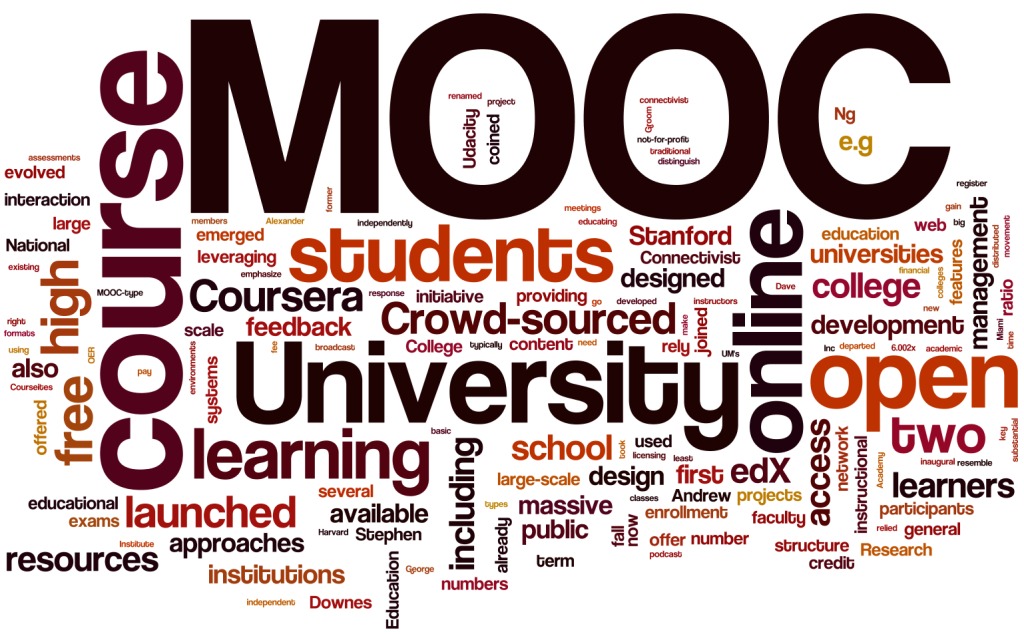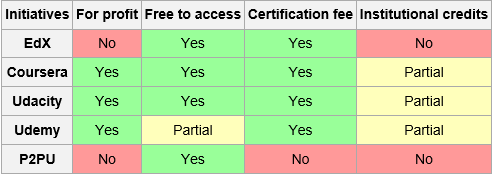MOOCs: The future is brighter for generations to come.
MOOCs or Massive Open Online Courses are becoming the trend now. The technology has opened up new dimensions in the industry of education and all you need is a computer with a working microphone and camera. Text books are available on the site itself. You can download an ebook for the duration of the course.
MOOCs are typically divided into three constituents – video lectures, quizzes and peer grading assignments.
Video Lectures
These are lectures prepared by professors or teaching assistants who help in giving the details and concepts about the subject or the course in full itself. You can choose to watch the lectures or skip, if you know the concepts already. But some courses expect you to watch the videos in full when you are enroll for it. There is an in-video quizzes which helps you to understand the topic better.
Quizzes
These are used for assessment and help in grading. With each course, the grading policy changes and the teacher/professor decides on how much percentage you need to pass the course. There are two types of passing. One is normal passing and the other is passing with distinction. For example, getting 40% out of the total score will get you a Statement of Accomplishment whereas if you get around 70% you will get a Statement of Accomplishment with Distinction.
Peer Graded Assignment
Some courses will give you a peer graded assignment. It can be anywhere from analyzing the answers of your peers in programs (in programming courses) or questions answered by them (in any course other than a programming course). The peer graded assignments have a trick up their sleeve. You have to give high grades to your peers in order to get a good grade yourself which will help you in boosting up your scores.
The sites that offer the above are many and Ill discuss about the two main portals.
The potential benefits of the MOOCs are the following twelve.
- It can be set up in multiple languages for the same course so there is a better understanding in the native language.
- Serendipitous learning can be triggered by peer-peer connectivity.
- It will help in improving lifelong learning skills
- It is very much placed in an informal setting.
- It is produced and delivered in a shorter time frame.
- Anyone who has web access can access the content.
- There are no physical boundaries and time zone differences
- There are many online tools which help in the learning of concepts
- There are no institutional barriers and most of the courses are free
- It will enhance participation and networking thus improving personal environment.
- There are lower barriers for student entry.
- The centralized content can be shared by all
Now, lets look at some stats on how many people are taking these courses and in what category they are.
Each group is different and let me explain you the terms. The courses are aimed at High school, Undergraduate and Graduate students. In that there are four categories. Auditors who watch the videos but don’t take time to complete the quizzes. Completing is the process of answering quizzes as well as watching all the lecture videos. Disengaging students drop out of the course very quickly. Samplers are students who take quizzes but lest watch videos. They watch the videos occasionally.
If you have any questions regarding MOOCs, let us know in the comments section below.



